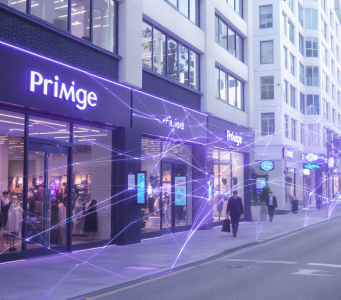Beyond Cost-Plus: How AI Pricing Models Adapt to Market Realities
Beyond Cost-Plus: How AI Pricing Models Adapt to Market Realities
In retail and ecommerce, pricing has long been a balancing act between costs, competition, and customer expectations. For decades, many retailers relied on a simple cost-plus formula: take the base cost of a product, add a target margin, and call it a price. It worked well enough in predictable markets, where demand patterns were stable and competitive pressure was limited. But today’s market is anything but predictable.
Costs fluctuate weekly. Competitors adjust prices daily. Consumer expectations shift overnight. In this environment, cost-plus pricing no longer reflects reality, it oversimplifies it. The modern retail world demands something far more adaptive and intelligent.
Enter AI-driven pricing models, which move beyond cost-plus thinking to create dynamic, demand-informed, and elasticity-aware strategies. These models do not just calculate margins; they understand markets. They balance competitiveness with profitability, using data-driven insights that adjust as the market evolves.
To understand why this shift matters, let’s explore why traditional models fall short, what AI brings to the table, and how Hypersonix’s Pricing AI is helping retailers modernize their approach to pricing.
To understand why retailers are rethinking their approach, it helps to start with the traditional model that dominated pricing for decades and why it’s now showing its limits.
Why Cost-Plus Pricing No Longer Works
The simplicity of cost-plus pricing has always been its biggest strength, and its biggest weakness. The logic is straightforward: set prices high enough to cover costs and achieve a desired profit margin. But in a market where costs, competitors, and demand fluctuate constantly, static markups create blind spots that erode profitability.
One major limitation of cost-plus pricing is that it ignores customer perception and price sensitivity. Not every product responds to price changes in the same way. Key value items (KVIs), such as household essentials or electronics accessories, have high price elasticity. Even small changes can impact demand. On the other hand, niche or convenience products may have low elasticity, meaning retailers can price them higher without losing volume.
Cost-plus pricing treats both cases the same. It adds the same margin to every product, regardless of elasticity or customer behavior. As a result, retailers often underprice where customers are less sensitive and overprice where they are most sensitive, a recipe for both lost profit and lost share.
The second issue lies in timing. In traditional retail operations, prices are reviewed periodically, weekly, monthly, or quarterly. By the time adjustments are made, competitor activity or cost changes have already shifted the market. For ecommerce retailers, where competitors move daily, the lag is even more damaging.
Finally, cost-plus pricing overlooks the growing complexity of omnichannel retail. Selling through a brand’s website, third-party marketplaces, and physical stores introduces unique cost structures and competitive pressures. Applying the same markup formula across every channel can result in pricing mismatches that confuse customers and undermine trust.
Retailers can no longer afford pricing models that assume the world stands still. They need intelligence that evolves with every shift in market dynamics.
The shortcomings of cost-plus pricing reveal a simple truth: static formulas cannot keep pace with a dynamic market. To bridge this gap, retailers are turning to systems that think and adapt in real time.

The Shift Toward Intelligence and Adaptability
Moving beyond cost-plus pricing means embracing models that are dynamic, data-driven, and context-aware. Rather than setting prices based solely on cost inputs, AI models consider multiple variables: competitor activity, customer demand patterns, inventory levels, promotions, and macroeconomic factors such as inflation or supply chain volatility.
AI systems like Hypersonix Pricing AI do not just observe these factors; they analyze how they interact. They understand the relationship between price changes and customer response, learning over time which actions protect or expand margins.
This adaptability is critical in categories with frequent price changes, such as grocery, apparel, or consumer electronics. Retailers cannot manually track thousands of SKUs or predict how a competitor’s flash sale will impact conversion. AI bridges this gap by turning complex data into actionable recommendations that balance competitiveness with profitability.
In practice, this means pricing decisions are no longer about hitting a fixed markup target. They are about achieving the best possible outcome in a specific market context, maximizing revenue, protecting margins, or responding strategically to competitor moves.
But adaptability is only part of the equation. To move from reaction to precision, retailers also need to understand how customers respond to price changes and that insight begins with elasticity.
Elasticity: The Heart of AI-Driven Pricing
At the center of this transformation is elasticity modeling, one of the most powerful tools within AI pricing systems. Elasticity measures how sensitive customer demand is to price changes. By understanding elasticity at a product, category, or regional level, retailers can make smarter pricing decisions that align with both customer behavior and business objectives.
For example, consider a retailer selling car batteries and floor mats. The elasticity for these products is very different. Batteries are typically inelastic; when they fail, customers replace them quickly, regardless of price. Floor mats, on the other hand, are elastic, demand fluctuates with price and seasonality.
A cost-plus model would add the same markup to both, ignoring their distinct behaviors. Hypersonix Pricing AI, however, would detect that higher margins can be sustained on inelastic products like batteries, while more competitive pricing is needed for highly elastic ones like floor mats.
This nuanced understanding turns pricing into a science. Elasticity models evolve with each transaction, incorporating new data on customer behavior, competitor pricing, and promotional impact. Over time, they become more accurate, allowing retailers to anticipate rather than react.
Elasticity also plays a vital role in price perception. By keeping key value items competitively priced and recovering margins on less sensitive products, retailers can build customer trust while protecting profitability. The result is pricing that feels fair to customers but remains optimized for business outcomes.
While elasticity helps retailers understand internal demand behavior, pricing decisions don’t happen in isolation. True pricing intelligence also requires a clear view of what’s happening in the competitive landscape.

Competitor Intelligence: Context for Smarter Pricing
While elasticity helps retailers understand internal dynamics, Competitor AI adds the external perspective. It tracks how competitors are pricing and promoting similar products, revealing trends and identifying opportunities.
Traditional competitor monitoring might occur weekly or monthly, but Hypersonix provides daily tracking, offering near-continuous visibility into market movements. Retailers can see when competitors lower prices, introduce new bundles, or run promotions, and assess how those actions impact market share.
However, intelligence alone is not enough. Hypersonix integrates AI-powered product matching, ensuring that comparisons are meaningful. A private-label detergent and a branded equivalent might not share identical SKUs, but they compete for the same customer. The system uses computer vision and language models to match equivalents accurately, eliminating blind spots that skew traditional pricing analyses.
By combining elasticity insights with competitive intelligence, Pricing AI ensures that pricing decisions are not made in isolation. Retailers can evaluate how their prices stack up in the market, determine whether to match, hold, or adjust, and forecast the potential margin impact before acting.
Having intelligence is powerful, but trusting it is essential. This is where explainable AI becomes the cornerstone of confident decision-making.

Explainability: Building Confidence in AI Pricing
One of the biggest barriers to adopting advanced pricing systems has always been trust. Many decision-makers hesitate to act on AI recommendations because they cannot see how the conclusions were reached.
Hypersonix addresses this through explainable AI. Every recommendation comes with a clear rationale; showing which variables influenced the suggestion and how changes might affect margin or demand. This transparency turns AI from a black box into a trusted decision partner.
Executives can understand not just what action is being recommended, but why. Category managers can validate decisions against their own market knowledge. Finance teams can see the projected profit implications. This explainability accelerates adoption, ensuring that AI enhances human decision-making rather than replacing it.
Explainable AI also aligns with governance needs. As pricing decisions carry significant financial impact, retailers must maintain control and accountability. Hypersonix’s agentic workflows ensure that every AI recommendation can be reviewed, approved, or adjusted by pricing teams before execution. The system learns from these decisions, refining future recommendations for even greater accuracy.
When transparency meets technology, AI-powered pricing stops being theoretical, it becomes a practical driver of agility and profitability in everyday retail operations.
The Impact: From Static Pricing to Strategic Agility
Retailers that have embraced AI-driven pricing models are seeing tangible results. They react faster to market shifts, maintain tighter control over margins, and make more confident pricing decisions.
Instead of setting prices once and hoping for the best, they continuously refine and optimize. When costs rise, AI helps determine how much of that increase can be passed to customers without losing demand. When competitors launch promotions, AI predicts the potential impact and recommends the right response.
This strategic agility delivers measurable improvements in profitability and efficiency. Pricing teams save hours of manual work, decisions are more consistent, and the organization gains a unified, data-backed view of pricing performance.
These outcomes signal a larger transformation taking place in retail; one that goes beyond tools and techniques to redefine how organizations think about pricing itself.
From Formulas to Intelligence
The transition from cost-plus to AI-driven pricing represents more than a technical upgrade, it is a cultural shift. It changes how organizations think about value, competition, and customer behavior.
Where cost-plus models rely on static formulas, AI relies on continuous learning. Where old models assume uniformity, AI thrives on variation. It adapts pricing strategies to every product, region, and market condition, ensuring that decisions reflect reality, not assumptions.
Hypersonix Pricing AI embodies this evolution. By combining elasticity modeling, competitor intelligence, and explainable insights, it enables retailers to move from formula-based pricing to intelligent orchestration — where every price is purposeful, and every margin is intentional.
The evolution from cost-based formulas to adaptive intelligence is not just about automation. It’s about building a smarter, more resilient foundation for profitability in the modern retail world.
Conclusion
The retail landscape has outgrown cost-plus pricing. Static markups cannot navigate a world defined by dynamic competition, shifting costs, and discerning customers.
To thrive, retailers and ecommerce brands must embrace AI-driven pricing models that learn, adapt, and act with precision. These systems capture the fluid nature of modern commerce, ensuring that pricing remains both competitive and profitable — not through guesswork, but through intelligence.
With Hypersonix Pricing AI, pricing becomes a living strategy rather than a fixed formula. It’s not about adding margin; it’s about adding meaning to every pricing decision.
As market realities evolve, the retailers who move beyond cost-plus will not just protect profit; they will lead the next era of intelligent, adaptive pricing.






